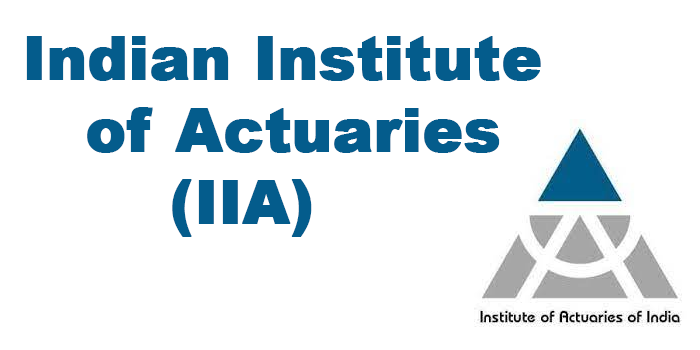
The Indian Institute of Actuaries (IIA) is an autonomous body established in 2006 with the purpose of promoting and regulating the actuarial profession in India. It is the representative body of the actuarial profession in India and is responsible for setting and maintaining standards of education, professional qualifications, ethics and professional practice. The Institute is recognized by the Insurance Regulatory and Development Authority (IRDA) and the Pension Fund Regulatory and Development Authority (PFRDA). The Institute also provides assistance to the Ministry of Finance in the matters related to actuarial profession.
Indian Institute of Actuaries (IIA) Entrance Test
The Indian Institute of Actuaries (IIA) Entrance Test is an exam that is required to be taken by all those who want to become an actuary in India. The exam is conducted in two parts: a written examination and an oral examination. The written examination consists of multiple–choice questions from the areas of mathematics, statistics, economics, and finance. The oral examination tests the candidate‘s knowledge in the areas of actuarial science, risk management, and insurance regulation. The exam is conducted once a year and the results are declared within a few weeks of the exam.
Indian Institute of Actuaries (IIA) Eligibility Criteria
To become an Associate of the Institute of Actuaries of India (IIA), one needs to fulfil the following eligibility criteria:
1. A person must have successfully completed the examinations of the Institute of Actuaries of India and obtained a minimum of 50% in each of the papers.
2. A person must have at least three years of relevant professional experience in the field of actuarial science.
3. A person must be a member of the Institute of Actuaries of India.
4. A person must have a good character and must have maintained a good record of professional conduct.
5. A person must possess a valid certificate of professional indemnity insurance, or similar insurance.
6. A person must have paid the prescribed fees and dues of the Institute of Actuaries of India.
Indian Institute of Actuaries (IIA) Colleges In India
1. Faculty of Actuarial Science and Insurance, University of Mumbai
2. Indian Institute of Insurance and Risk Management, Hyderabad
3. Indian Institute of Actuaries, Mumbai
4. Institute of Insurance and Risk Management, Hyderabad
5. Institute of Actuaries of India, New Delhi
6. National Insurance Academy, Pune
7. International Institute of Insurance and Finance, Mumbai
8. Institute of Actuarial Science, Mumbai
9. Institute of Risk Management, Kolkata
10. Insurance Institute of India, Mumbai
Indian Institute of Actuaries (IIA) List of Stream
The Indian Institute of Actuaries (IIA) offers a variety of streams of study and professional development. These include:
1. Actuarial Science
2. Risk Management
3. Insurance
4. Financial Management
5. Pension and Social Security
6. Health and Medical Insurance
7. Financial Mathematics
8. Financial Economics
9. Financial Modeling
10. Investment Analysis
11. Life and Non–Life Insurance
12. Reinsurance
13. Enterprise Risk Management
14. Data Analysis and Statistics
15. Business Analytics
Indian Institute of Actuaries (IIA) Syllabus
The Institute of Actuaries of India (IIA) is the premier institute in India for professional qualifications in actuarial science. The IIA syllabus comprises five levels of examinations, leading to the Award of Associate and Fellowship of the IIA.
Level I: Core Technical (CT) This is the first level of the IIA syllabus and is designed for candidates who are new to the field of actuarial science. This level covers the fundamentals of actuarial science and includes topics such as mathematics, statistical analysis, probability theory, financial mathematics, insurance and general actuarial principles.
Level II: Core Application (CA) This is the second level of the IIA syllabus and builds on the concepts learned in the CT level. This level covers the application of actuarial techniques to practical problems, including topics such as risk management, financial reporting, asset–liability management and insurance economics.
Level III: Core Practice (CP) This is the third level of the IIA syllabus and is designed to prepare candidates for professional practice in the field of actuarial science. This level covers topics such as communication, ethics, management and professional practice.
Level IV: Advanced Technical (AT) This is the fourth level of the IIA syllabus and is designed to provide candidates with a more advanced understanding of actuarial techniques. This level covers topics such as life contingencies, stochastic models, financial derivatives, investment and pension plans.
Level V: Advanced Application (AA) This is the fifth and final level of the IIA syllabus and is designed to prepare candidates for professional practice in the field of actuarial science. This level covers topics such as enterprise risk management, advanced financial reporting, catastrophe modelling and financial modelling.



